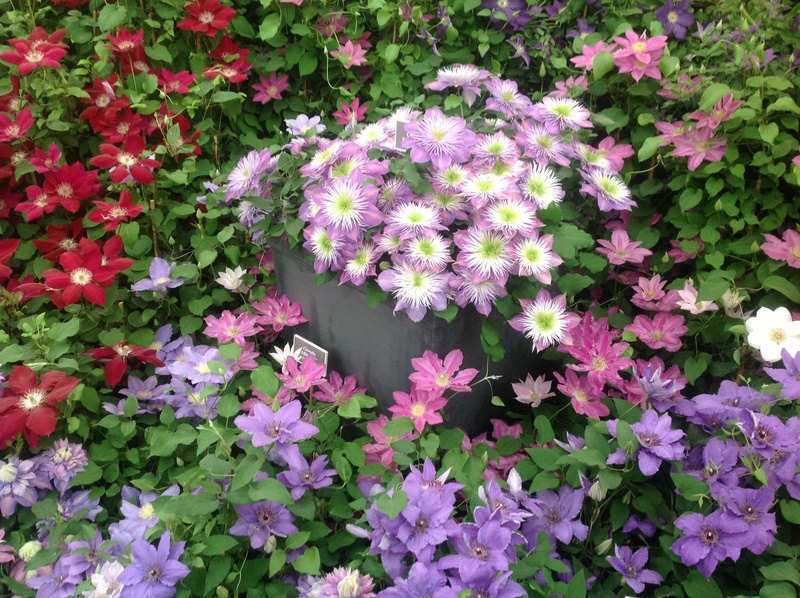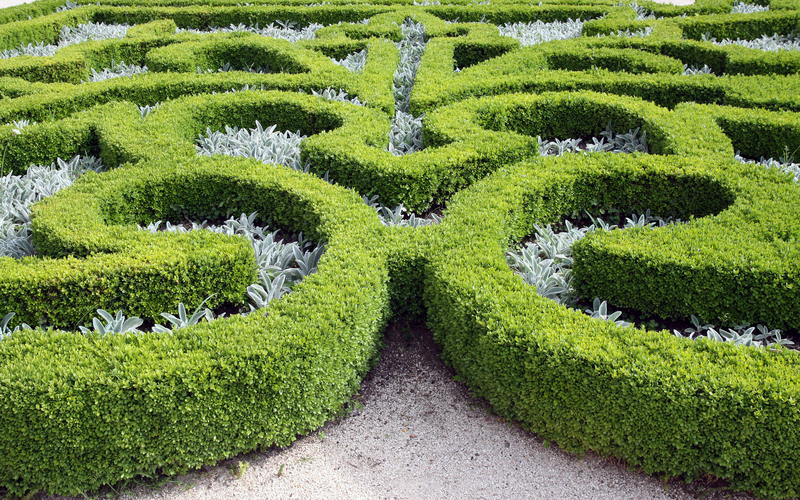Dogs and Gardens: Mitigating Paws and Pests
Posted on 08/06/2025
Dogs and Gardens: Mitigating Paws and Pests
If you are a dog lover with a green thumb, balancing canine companions and a flourishing garden can often feel like a delicate dance. Understanding how to create a pet-friendly yard while maintaining a beautiful, pest-resistant environment is crucial for both your furry friends and your plants.

The Unique Challenge of Pet-Friendly Gardening
Your dog-friendly garden is not just a pretty place; it's an ecosystem that supports life--yours, your pet's, and local wildlife. Yet, dogs and gardens can sometimes be at odds. Paws may trample tender shoots, and playful digging can disrupt roots. Beyond physical damage, canine habits can also attract or deter pests in complex ways, making the balance of dogs and garden care uniquely challenging.
Common Issues When Dogs and Gardens Mix
- Digging: Many dogs have an instinct to dig, which can uproot or damage garden beds.
- Trampling: Active dogs can crush fragile plants while running or playing.
- Urine Spots: Dog urine is high in nitrogen, which can burn lawn grass and some plants.
- Chewing: Curious pups might chew on plants--some of which may be toxic to them.
- Spread of Pests: Dogs can unintentionally carry pests like fleas, ticks, or even fungal spores into the garden.
Designing a Dog-Proof Garden: First Steps
1. Plan Pathways and Play Areas
Structure your garden to guide both human and dog traffic. Established paths or stone walkways invite dogs to follow specific routes, reducing random trampling of plants. Dedicate a dog play zone with mulch or pea gravel where digging or running is encouraged.
2. Choose Sturdy Plantings
Select resilient groundcovers and robust shrubs for high-traffic areas. For example, Blue Star Creeper, Ajuga, and certain ornamental grasses can recover quickly from occasional paw traffic, making them ideal for a dog-friendly garden.
3. Create Barriers and Borders
- Use raised beds to protect sensitive flowers and vegetables.
- Install decorative fencing or low hedges to define off-limits areas.
- Consider natural deterrents, like rocks or thorny bushes, to keep curious noses away from vulnerable plants.
Protecting Your Garden from Paws
Smart Plant Selection
When gardening with dogs, prioritize non-toxic plants and avoid those dangerous to pets. Some common dog-safe choices include:
- Sunflowers
- Snapdragons
- Marigolds
- Basil
- Rosemary
- Fuchsias
Toxic plants to avoid in a yard with dogs:
- Oleander
- Azalea
- Sago Palm
- Foxglove
- Grapevines (grapes are toxic to dogs)
Consult the ASPCA's list of toxic and non-toxic plants for a comprehensive reference when designing your landscape.
Training Your Dog to Respect Garden Spaces
Positive reinforcement can teach your dog to leave fragile garden beds alone. Use treat-based training, praise, and consistency. Reward your dog for staying out of restricted areas and redirect attention to appropriate play zones. Patience and repetition are key to successful coexistence between your dog and garden.
Repellents and Deterrents
- Natural sprays made from citrus, vinegar, or diluted hot pepper can deter digging or chewing. (Always spot-test to avoid harming plants.)
- Burying chicken wire just below soil surface in vulnerable beds discourages digging.
- Motion-activated sprinklers can gently teach dogs to avoid forbidden zones.
Managing Urine Spots
Dog urine burns in the lawn are unsightly but manageable. Solutions include:
- Training your dog to use a specific "potty area" with stone, mulch, or artificial turf.
- Watering the spot immediately after your dog urinates to dilute nitrogen concentration.
- Planting more resilient grass varieties, such as fescue or perennial rye, which tolerate urine better than Kentucky bluegrass.
Managing Garden Pests With Pets in Mind
The presence of dogs affects not just plants, but pests and pest management strategies. Both organic pest controls and chemical pesticides may be harmful to pets, requiring careful selection and application.
Common Garden Pests and Pet-Safe Solutions
- Aphids: Use neem oil (applied when pets are not in direct contact), insecticidal soap, or strong water sprays rather than toxic chemicals.
- Slugs and snails: Avoid slug baits containing metaldehyde, which is highly toxic to pets. Use barriers like crushed eggshells or copper tape, or install beer traps inaccessible to dogs.
- Fleas and ticks: Keep grass mowed and remove leaf litter. Consider planting flea-repellent herbs (like lavender or rosemary) around play areas.
- Rodents: Avoid anticoagulant baits, which are extremely dangerous if ingested by pets. Use secure traps or physical barriers.
Integrated Pest Management (IPM) for Pet-Friendly Yards
The principle of Integrated Pest Management (IPM) is to use the least toxic methods first, escalating only as necessary. For the dog owner's garden, IPM steps include:
- Encouraging natural predators, like beneficial insects and birds.
- Hand-picking pests or using mechanical methods (e.g., row covers, traps).
- Spotting and treating infestations early, so problems don't escalate.
- Using diluted, pet-safe solutions as a final resort--and always following label directions.
The Impact of Dogs on Garden Ecosystems
It's not all negative; dogs can help deter some unwanted wildlife in the garden, such as rabbits, deer, and even certain pests, due to their scent and presence. However, the trade-off is that digging and chasing can disturb the habitat of beneficial critters. Striking harmony requires understanding:
- How dog activity influences soil health (compaction, digging, nutrient distribution)
- The dynamics between your pet and local wildlife or helpful insects
- Balancing playtime with preservation to ensure a thriving garden ecosystem
Attracting Beneficials Without Attracting Trouble
Focus on plants that invite pollinators (like bees and butterflies) but are uninteresting to dogs. Keep bee-attracting flowers away from main dog areas to minimize the chance of stings. Avoid composting meat or animal waste, both to protect your dog from scavenging and to reduce visits from pests like raccoons or rats.
Year-Round Maintenance Tips: Robust Gardens, Happy Dogs
Spring and Summer
- Inspect fences and gates for gaps to keep dogs (and pests!) in check.
- Mulch new beds, but avoid cocoa mulch, which is toxic to dogs.
- Monitor plant growth and fence off vulnerable areas as needed.
- Set up water stations to keep pets hydrated during garden play.
- Check for flea and tick activity regularly and brush dogs after they've been outdoors.
Fall and Winter
- Rake leaves and clean up debris to minimize overwintering pests.
- Prune back dead plant matter and erect barriers to protect perennials from digging.
- Consider cold-tolerant grasses for dog runs to reduce muddy paws.
- Supervise pets near any de-icing agents--choose pet-safe salt alternatives for walkways.
Creative Solutions for Both Dog and Garden Lovers
Pet Play Features
Your dog-friendly garden landscape can be as fun as it is functional. Consider adding:
- Dog tunnels or agility equipment in a corner of the yard
- A sandbox for digging, filled with clean sand
- Shade trees or pet-safe shrubs for cool resting spots
- Secure, escape-proof boundaries to allow off-leash freedom
Garden Decor and Multi-Use Elements
- Raised planters that double as seating (and keep plants safe)
- Stepping stones for both human and canine pathways
- Water features with shallow, dog-friendly zones for splash play
- Vertical gardens to maximize space away from prying paws
Smart Use of Technology
- Install Wi-Fi-connected cameras to check on both your dog and the garden remotely
- Automated sprinklers that double as deterrents for unwanted areas
- Solar lights to keep paths well-lit at night

Frequently Asked Questions About Dogs and Garden Pests
Are dogs helpful for managing garden pests?
Sometimes. Dogs can deter larger garden pests (deer, rabbits) simply by their scent and presence. However, they do not help with most insect pests and may even transport flea and tick populations if not regularly given preventive treatments.
What are the safest pest control options for pet-friendly gardens?
- Physical barriers: netting, fencing, row covers
- Beneficial insects or nematodes
- Hand-picking or using soapy water sprays
- Botanical oils like neem, used as per label instructions
How can I minimize mud and mess in a dog yard?
- Lay gravel, mulch (not cocoa), or artificial turf in high-traffic areas.
- Create dedicated runways and pathways for easy cleanup.
- Choose fast-draining landscaping to prevent puddles.
Conclusion: Harmony Between Dogs and Gardens Is Possible
Balancing dogs and gardens is about embracing creative solutions, smart landscaping, and safe pest management. By using strategic plant selection, training, fencing, and pet-safe pest controls, you can enjoy both a happy pet and a thriving garden. Remember, gardening with dogs is not just about protecting plants from paws and pests--it's about nurturing a vibrant space where everyone can thrive.
Whether you're starting a new garden or adapting an old one, keep these tips for a dog-friendly garden in mind to make your landscape an oasis for you, your canine companion, and the wonders of nature.

